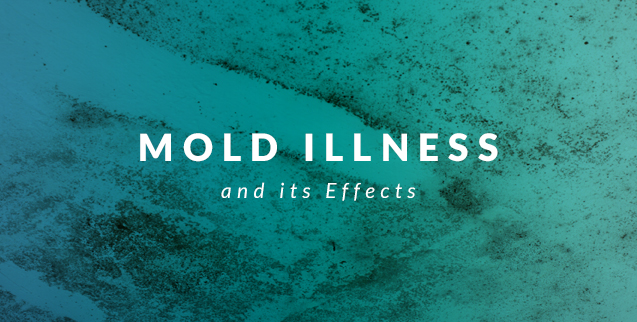
Many people suffer from symptoms caused by prolonged mold exposure. Sneezing, coughing, watery eyes, and skin reactions are all symptoms and each person’s immune system reacts differently to being exposed to mold. Due to so many different reactions, symptoms of mold exposure, or mold illness, go misdiagnosed for years and people tend to suffer from a poorer quality of life. While awareness of mold illness has greatly increased over the years, many physicians and people affected by mold are still unaware of the symptoms. The root problem of mold illness is sometimes not addressed properly even though its effects hamper many people throughout the world.
Mold Illness May be Affecting You
 What is Mold Illness?
What is Mold Illness?
In the 1990s, Dr. Ritchie Shoemaker discovered a connection between exposure to water damaged buildings containing toxic mold and common symptoms of an illness seen in patients. Using the connection to help patients who suffered from general mold illness, he went on to define a specific and more severe case of mold illness as well. Officially defining the severe case of mold illness as Chronic Inflammatory Response Syndrome, which later fell into the over-arching term of mold illness, this diagnosis was groundbreaking and opened treatment options for about 25 percent of the population who dealt with the illness daily.
Defined as “an acute and chronic inflammatory response syndrome with genetic susceptibility,” CIRS, is an illness of pre-disposed individuals that is activated after exposure to mold. Individuals who suffer from general mold illness have immune systems that cannot properly deal with the biotoxins produced by mold and, as a result, suffer from severe symptoms and are more prone to the specific illness of CIRS.
 The Symptoms of Mold Illness
The Symptoms of Mold Illness
Mold illness and CIRS affects people who are genetically predisposed to the illness after they come into contact with mold. Most commonly, these individuals come into contact with mold unknowingly as they enter water-damaged buildings, which according to the Federal Facilities Council Technical Report, makes up 34 percent of all buildings. When exposed to mold, predisposed individuals have some or all of the following symptoms:
- Fatigue, weakness
- Aches, muscle cramps
- Memory, focus, and concentration problems
- Disorientation, confusion
- Headaches
- Vertigo, lightheadedness
- Sensitivity to light, blurred vision, red or tearing eyes
- Cough, sinus congestion, shortness of breath
- Abdominal pain, nausea
- Temperature regulation problems
- Numbness, tingling, tremors
Preventing Mold Illness
Since mold illness is caused by mold, which can grow in as little as 24 hours when water damage occurs, keeping your home or business water damage free is crucial in preventing mold illness. If your home or business receives water damage, the first step is to get the structure dry to minimize or prevent mold growth. A water damage remediation company can perform effective and professional structure drying when this occurs. In addition, It is important to maintain the integrity of your roof and pipes at all times to prevent water damage that leads to the growth of mold. You should also have your home or business tested for mold by a professional and see a CIRS physician if you feel you have any of the above symptoms. Investing in HEPA air filters and sanitizers can also benefit those who deal with symptoms of mold illness.



